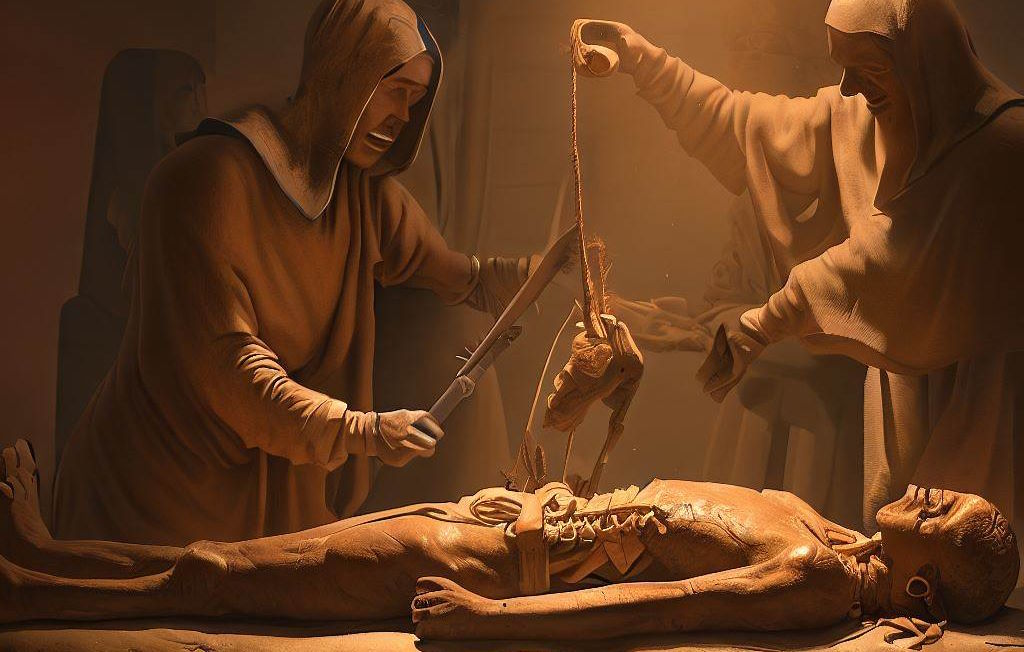Introduction to Human Taxidermy
Taxidermy is the art of preserving an animal’s body via mounting or stuffing, for the purpose of display or study1 2. The word taxidermy describes the process of preserving the animal, but it is also used to describe the finished product.
Taxidermy has been practiced for centuries, with crude examples of taxidermy being displayed by astrologers and apothecaries in the Middle Ages 3. In this blog post, we will explore the history and significance of human taxidermy. (more after the video)
Early Views on Human Taxidermy
In 1820, Sarah Bowdich wrote a taxidermy manual discussing the challenges of applying taxidermy to humans 2. The book went through six editions, spanning from 1820 to an undisclosed date.
Bowdich’s manual was one of the earliest known works on human taxidermy and discussed the difficulties of preserving human skin and hair. Bowdich’s work was not widely accepted, and human taxidermy remained a taboo subject for many years.
Sarah Bowdich’s taxidermy manual was one of the first comprehensive guides to the practice of taxidermy. While the manual primarily focused on animal taxidermy, Bowdich’s discussion of human taxidermy was one of the first in the field.
In her book, Bowdich notes that the process of preserving human bodies is much more difficult than working with animal specimens, and she discusses the moral and ethical considerations that come with the practice of human taxidermy.
Bowdich’s taxidermy manual went through six editions, spanning from 1820 to an undisclosed date. Each edition was updated with new techniques and information, making it a valuable resource for anyone interested in the practice of taxidermy.
The Evolution of Taxidermy Documentation
A photographer has documented the evolution of taxidermy, which is significant because it shows how taxidermy has changed over time 4. The photographer’s work includes images of taxidermied animals from different time periods, highlighting changes in techniques and styles. The documentation covers a brief timeline but provides valuable insight into the evolution of taxidermy.
Exploring the Human Taxidermy Trend
Human taxidermy has become a popular pastime in recent years 5. Various aspects of the trend include face masks and realistic skin tones. The appeal and interest behind this trend are due to its uniqueness and shock value. Some people find it fascinating to see a human preserved in a lifelike state, while others find it disturbing.
Unnatural History and Human-Animal Interactions
A book discusses human-animal interactions and taxidermy, focusing on a famous American taxidermist6. The book explores the curated nature of human-animal interactions and how they have been shaped by cultural norms and values. The book also discusses how taxidermy has been used to reinforce these norms and values.
Can You Taxidermy a Human?
The taxidermy process aims to preserve animal hides, hair, and heads 1 3. The origins of taxidermy date back to ancient Egypt, where mummification was used to preserve bodies. However, human taxidermy is illegal due to legal challenges and ethical considerations. It is considered unethical to treat human remains as objects for display or study.
Legality of Human Taxidermy in Different Countries
Human taxidermy is illegal worldwide 1 3. In some countries, it is considered a criminal offense to engage in human taxidermy. The “Negro of Banyoles” taxidermy case caused controversy when it was discovered that a preserved human body was on display in a museum in Spain 1. Pop culture depictions of human taxidermy in movies have also contributed to its notoriety.
Conclusion
In conclusion, human taxidermy has a long history that spans centuries. While it has become a popular trend in recent years, it remains illegal worldwide due to ethical and legal considerations. As society continues to evolve, it is important to consider the implications of our actions on both humans and animals. While some may find human taxidermy fascinating or intriguing, it is important to remember that humans are not objects for display or study.
References:
- https://digitalcommons.tacoma.uw.edu/cgi/viewcontent.cgi?article=1034&context=history_theses
- https://australian.museum/learn/teachers/classroom-activities/taxidermy/
- https://en.wikipedia.org/wiki/Taxidermy
- https://cjds.uwaterloo.ca/index.php/cjds/article/view/627/889
- https://feltmagnet.com/crafts/taxidermyoverview
- https://core.ac.uk/download/pdf/293039921.pdf

